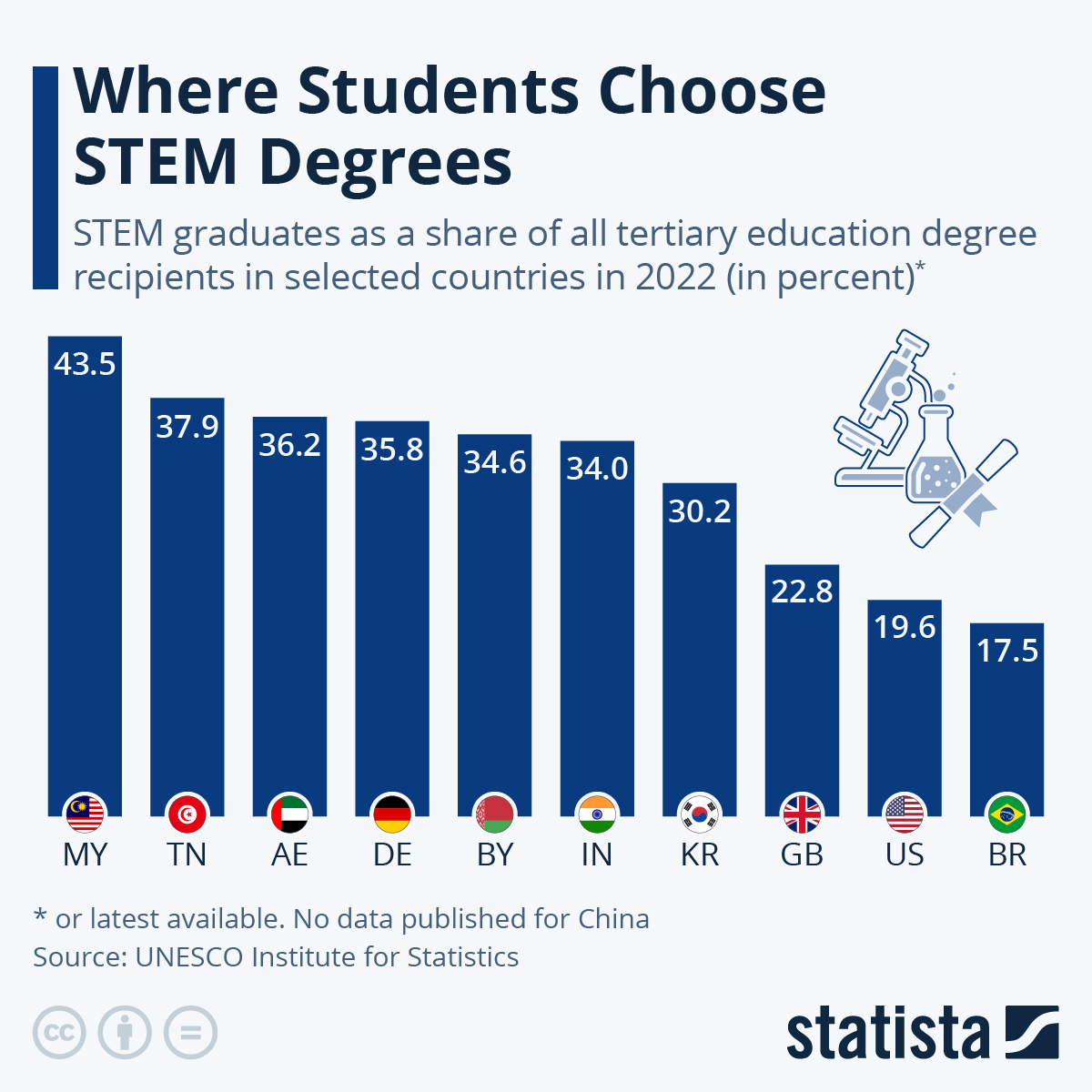
Notice that Americans are at the bottom of the pack.
They’d much rather go $60k in debt for a Women’s Studies degree than work for a degree that puts food on the table.
Graduates in the fields of science, technology, engineering and mathematics – STEM for short – are sought after globally, but are often in short supply. Many countries have tried to bolster enrollment in STEM to aid important growth industries like medtech, digital services, mobility or computer sciences. However, countries have had varying success in the matter.
According to numbers collected by the UNESCO Institute for Statistics, tertiary students in Malaysia and Tunisia are among the most likely to graduate in a STEM field, with between 43.5 and almost 40 percent of students there receiving a respective degree, out of all countries where recent data was available. India, with a still high share of 34 percent of students picking STEM, is however producing the most graduates in total in the field due to its population of around 1.4 billion people – the largest in the world.
UNESCO did not publish data for China. In 2016, the World Economic Forum said that China actually produced 4.7 million STEM graduates a year, which would actually exceed India’s number. Yet, according to the National Science Foundation, China classifies engineering and science fields quite broadly, leading to a lack of comparability in the data. The U.S. government agency counted 1.6 million Chinese science and engineering graduates in 2014, which would be fewer than Indian graduates.
Other countries with a strong showing of STEM graduates are the United Arab Emirates, Germany, Belarus and South Korea – all producing more than 30 percent STEM graduates. In general, countries that have managed to produce a higher share of STEM graduates than elsewhere are more likely to be found in the Arab world, in Eastern Europe and also in East Asia. After Tunisia, the share of STEM degree recipients is also upwards of 29% in Algeria, Mauretania and Morocco, all due to the prevalence of computer engineering in the region. The Arab Gulf – a place that has recently been pushing to innovate its economies – is producing an above-average number of STEM grads in some places, namely the UAE and Oman.
With the exception of Germany, Western Europe is not a STEM hotbed, however. Only 26 percent of UK graduates come from STEM courses, as do 25 percent in France and 23 percent in Spain. Even fewer graduate in the Americas, with shares of 19.6 percent and 17.5 percent in the U.S. and Brazil, respectively.
Infographic: Where Students Choose STEM Degrees
The Statista “Chart of the Day” currently focuses on two sectors: “Media and Technology”, updated daily and featuring the latest statistics from the media, internet, telecommunications and consumer electronics industries; and “Economy and Society”, which current data from the United States and around the world relating to economic and political issues as well as sports and entertainment.